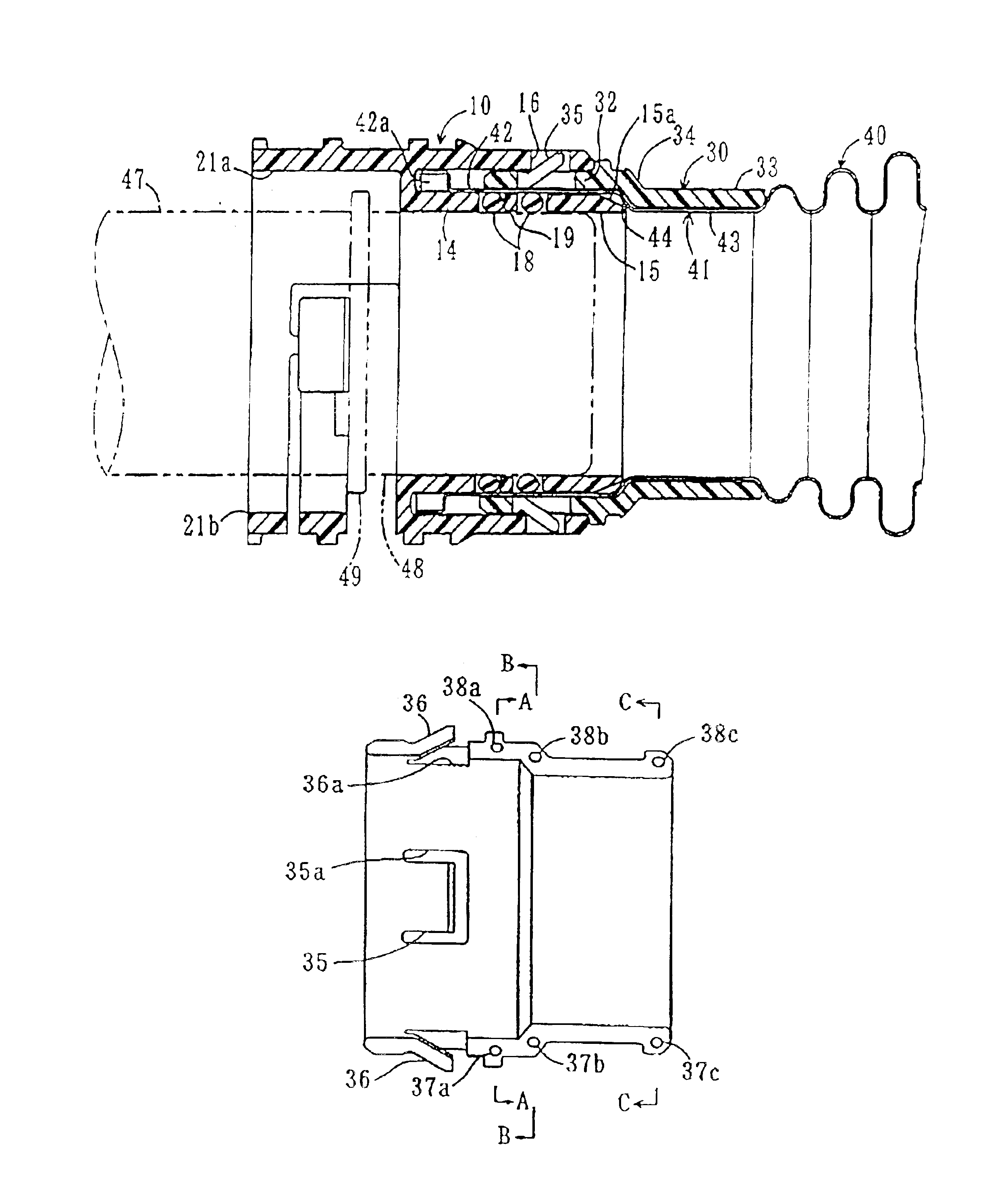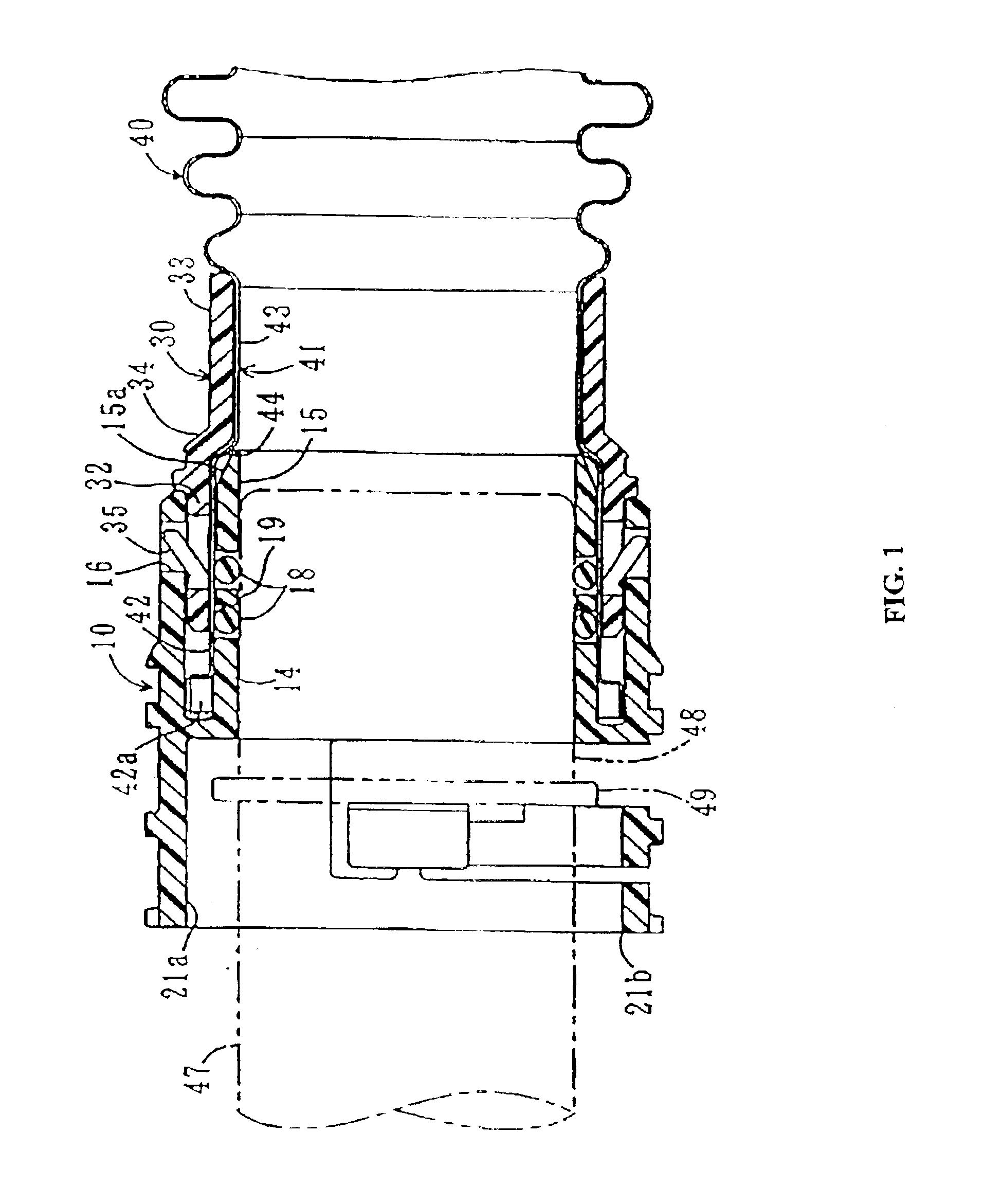Tube connecting structure
a technology of connecting structure and tube, which is applied in the direction of hose connection, pipe-joint, coupling, etc., can solve the problems of compromising the sealing properties affecting the installation of the tube connecting structure with the accordion tube in a small space, etc., and achieves the effect of preventing slippage, reducing the length of the straight section at the end of the first tube, and reliably preventing slipping ou
- Summary
- Abstract
- Description
- Claims
- Application Information
AI Technical Summary
Benefits of technology
Problems solved by technology
Method used
Image
Examples
Embodiment Construction
The present invention is described with references to the drawings. FIG. 1 is a front-view cross-section drawing of a tube connecting structure according to the present invention. FIGS. 2 through 10 show simplified views of the connecting member portion of the tube connecting structure. The tube connecting structure includes: a roughly cylindrical connecting member 10 extending axially straight from a first end to a second end; a first tube 40 formed as a resin accordion tube inserted and fitted from the open end at the first end of the connecting member 10; a joining member 30 engaging the first tube 40 to the first end of the connecting member 10; a second tube 47 inserted and fitted into the open end at the second end of the connecting member 10; and an elastic ring-shaped sealing member 19 inserted and fitted into the connecting member 10 and serving to seal a space between the inner perimeter surface of the first tube 40 and the outer perimeter surface of the second tube 47. Wi...
PUM
 Login to View More
Login to View More Abstract
Description
Claims
Application Information
 Login to View More
Login to View More - R&D
- Intellectual Property
- Life Sciences
- Materials
- Tech Scout
- Unparalleled Data Quality
- Higher Quality Content
- 60% Fewer Hallucinations
Browse by: Latest US Patents, China's latest patents, Technical Efficacy Thesaurus, Application Domain, Technology Topic, Popular Technical Reports.
© 2025 PatSnap. All rights reserved.Legal|Privacy policy|Modern Slavery Act Transparency Statement|Sitemap|About US| Contact US: help@patsnap.com



